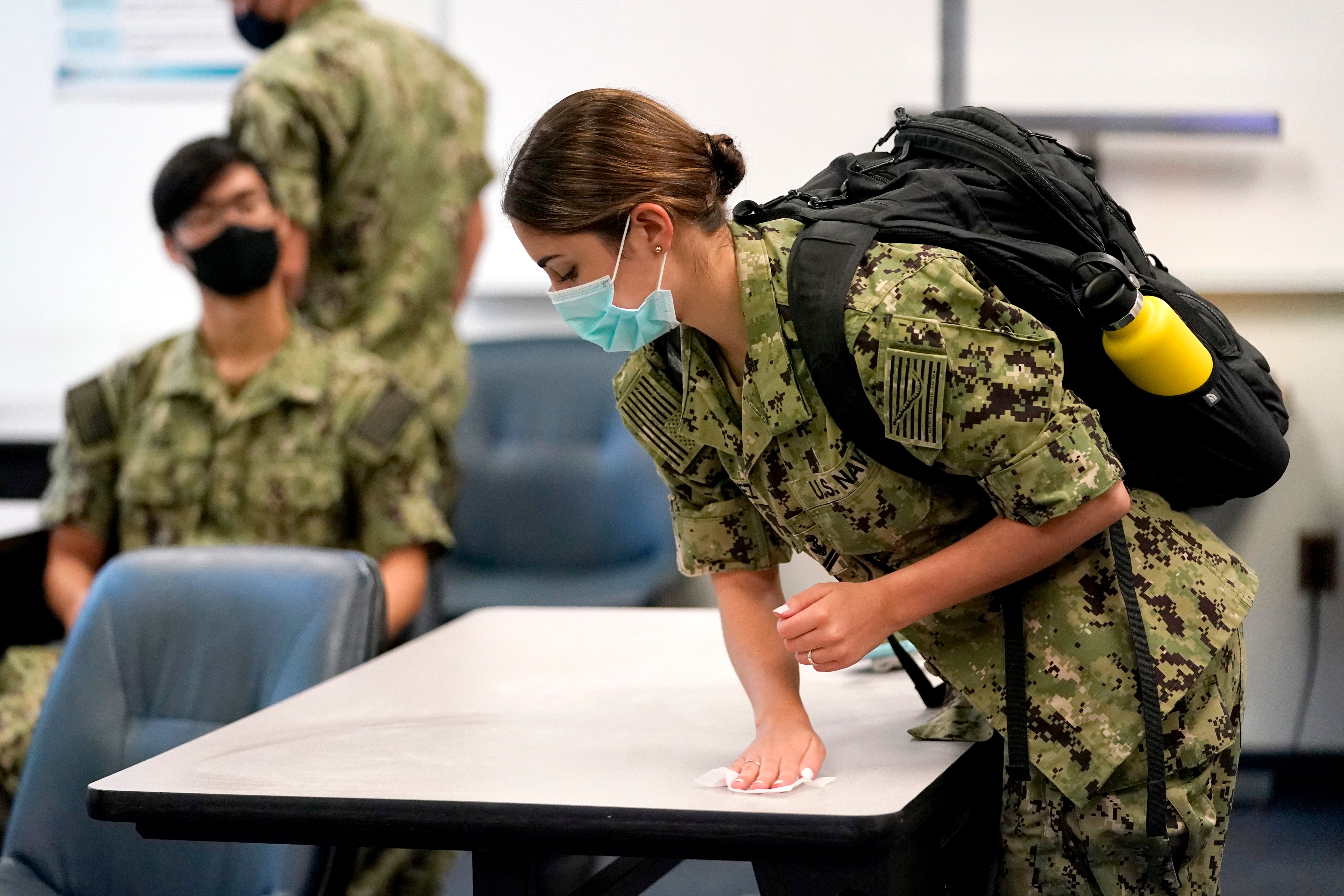Naval Academy seeking student vaccines for summer training
The U.S. Naval Academy is developing plans to begin vaccinating midshipmen this month so students can deploy to ships and with Navy teams as part of their training this summer

Your support helps us to tell the story
From reproductive rights to climate change to Big Tech, The Independent is on the ground when the story is developing. Whether it's investigating the financials of Elon Musk's pro-Trump PAC or producing our latest documentary, 'The A Word', which shines a light on the American women fighting for reproductive rights, we know how important it is to parse out the facts from the messaging.
At such a critical moment in US history, we need reporters on the ground. Your donation allows us to keep sending journalists to speak to both sides of the story.
The Independent is trusted by Americans across the entire political spectrum. And unlike many other quality news outlets, we choose not to lock Americans out of our reporting and analysis with paywalls. We believe quality journalism should be available to everyone, paid for by those who can afford it.
Your support makes all the difference.The U.S. Naval Academy is developing plans to begin vaccinating midshipmen this month so students can deploy to ships and with Navy teams as part of their training this summer, Vice Adm. Sean Buck told Congress Tuesday.
If the vaccines are available, the midshipmen would be the first military academy students to receive the COVID-19 shots. The plans come as the Naval Academy wrestles with a new uptick in positive coronavirus cases, and has locked down the campus in Annapolis, Maryland, for 10 days. Students have been restricted to their rooms for classes and meals, and can go outside for a maximum of two hours a day, with only one roommate.
The lockdown was announced on Sunday, and includes the suspension of sports events and practices, other than the men's varsity basketball team, which will participate in postseason play because the athletes have been isolated since last week.
Speaking to the House Defense Appropriations subcommittee, Buck said that he's given Navy leaders a timeline for when he'd like to begin giving vaccines to midshipmen who will be deploying out to the fleet.
“Our Navy has prioritized the operational forces first. They’re getting vaccinated. They have a very safe and healthy bubble,” Buck told lawmakers. “And for them to be willing to accept our midshipmen from the academy as well as midshipmen from NROTC universities around the country, we need to vaccinate them prior to the summer training.”
The Navy has had several small outbreaks on ships, both deployed and at home ports, and leaders have been trying to get crews vaccinated in order to avoid upticks in the virus. The USS Theodore Roosevelt, an aircraft carrier, had a massive outbreak early last year while at sea, and was sidelined in Guam for weeks while the crew went through a methodical quarantine process.
To meet the training timelines, Buck said a small initial group of students would have to start getting vaccines by the last week of March, in order to get out to their deployments in mid-May. That would give them time to get both shots, and have two weeks to ensure their immunity was in full effect.
Buck and the superintendents for the Army and Air Force academies told lawmakers that they have all started providing vaccines to their faculty and staff, based on the priorities set by the CDC and the Defense Department. But the Air Force and Army academies haven't yet begun preparations to give shots to students.
Army Lt. Gen. Darryl Williams, superintendent of the U.S. Military Academy at West Point, N.Y., said about 4,000 staff and faculty have gotten the vaccine so far, which is about half. He said first responders and vulnerable people are prioritized, as noted in the CDC and Pentagon guidelines.
He added that he's confident students will want to get the vaccine once it's available.
Air Force Lt. Gen. Richard Clark, superintendent of the Air Force Academy in Colorado, noted that the cadets are “the most healthy of our population and they fall into the lower level” of the priorities.